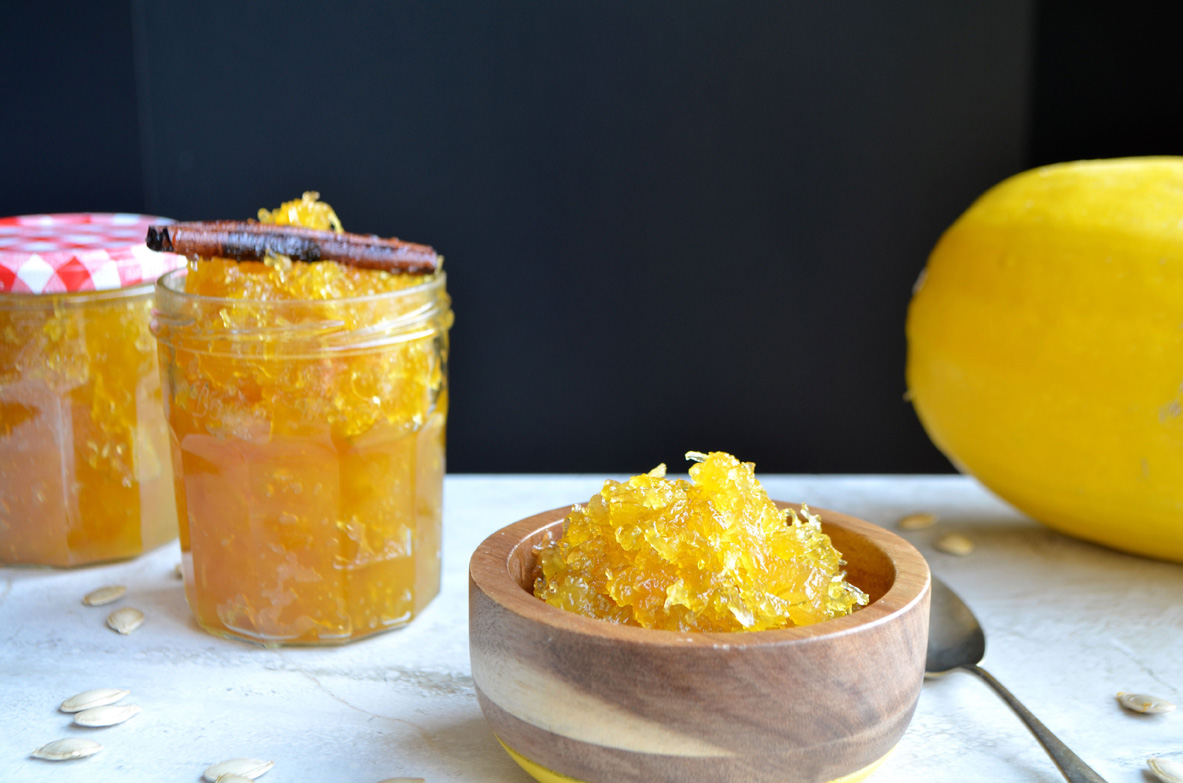Cabello de ángel is what we call it in Spain. Again, hard to translate into English, as the literal translation is “angel hair”. So that’s what I’ll call it: angel hair. Which is, basically, the candied fibers of the cidra squash. A good substitute for this kind of squash is the spaghetti squash, which is easier to find in the Midwest, and the one I used. Angel hair is used in a myriad of Spanish sweets.

















Ingredients:
1 spaghetti squash
Granulated sugar
2 sticks cinnamon
1 lemon peel (4-5 inches long)
METHOD:
- Wash the spaghetti squash. Using a large knife, cut the squash into chunks (it is very hard, so a trick I use is to “squash” it on a hard surface to break it open). Remove the seeds (request the children’s help for this step, as it is a little bit time consuming, but fun).
- Place the squash chunks in a large stockpot and fill with just enough water to almost cover them. Place on the stove at medium-high heat until it boils. Cover, lower the heat, and simmer for about 45 minutes (check for doneness with a fork: the pulp will be done when it’s tender and the fork doesn’t find resistance).
- Place a colander over a bowl and empty the contents of the stockpot. Let the pumpkin chunks cool down. When cold enough to handle, remove the peels, with the help of a spoon if necessary (the peels are hard, but easy to remove)
- Using your fingertips, pull the pieces of squash, which at this point have become stringy
- Place an empty bowl on a kitchen balance, zero it, and place the squash fibers on it to take its weight
- Place the squash fibers back in the stockpot and add 2/3 of their weight in sugar. Add the cinnamon and the lemon peel and cook at medium-low heat for about 40-45 minutes, stirring every once in a while. At first the mix will look more liquidy, but eventually the liquid will start to evaporate
- The “angel hair” is done when most of the liquid is evaporated and the fibers are visible and distinguishable again
- Place in jars to use in your next desserts or over toast.


